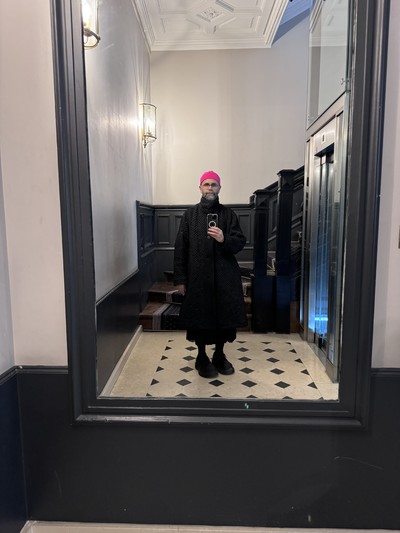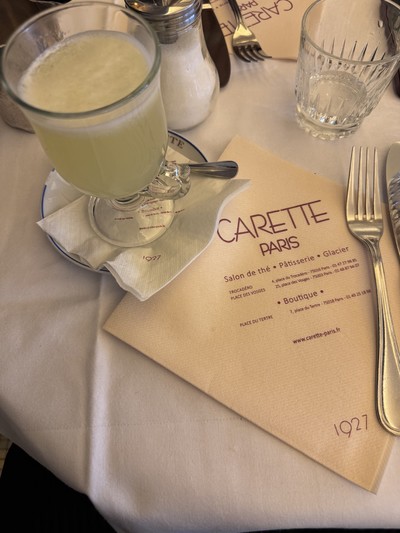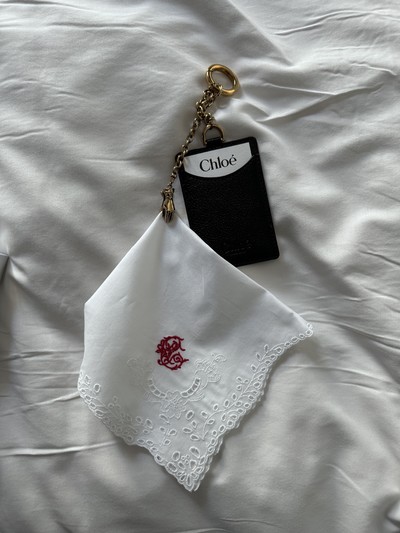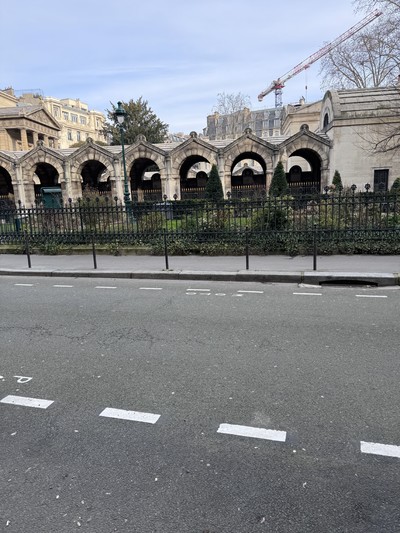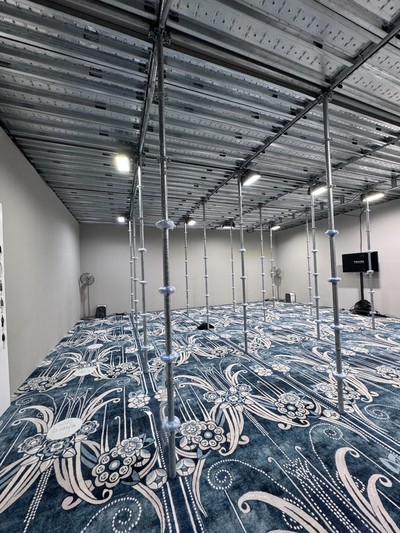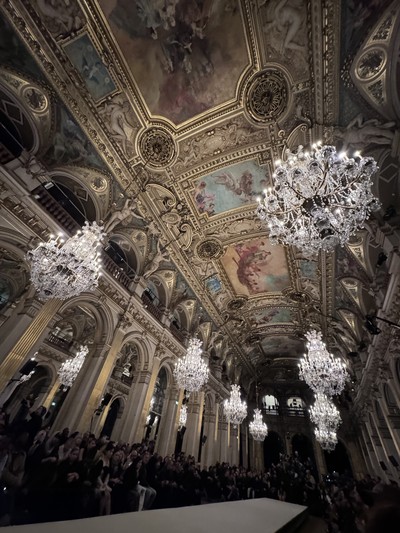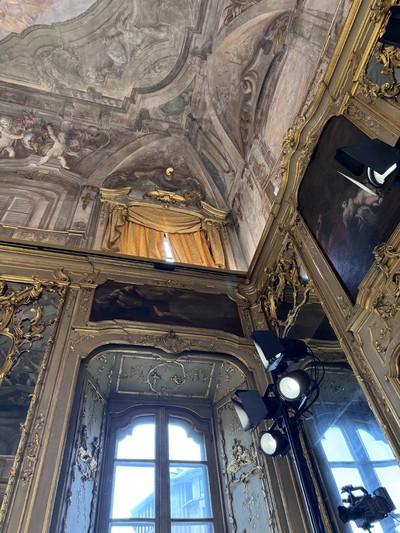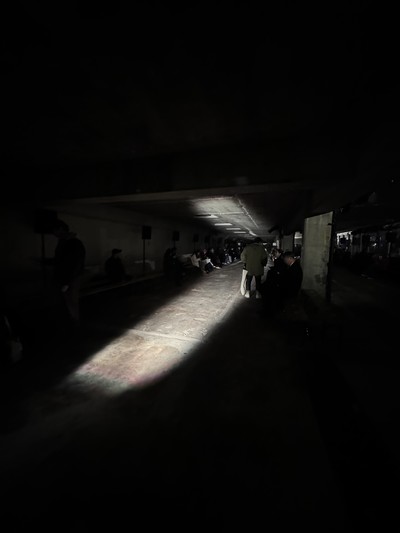Interview by Jonathan Wingfield
‘This is not the 1980s, when a bad review prevented buyers from buying that collection. Nobody cares. I think now it’s more a competition between critics: who is smarter, who is more bitter, who can say it in a nicer way. I hope fashion criticism creates a wider cultural debate, but I’m also aware that it’s a very narrow field of action.’
One of fashion’s foremost critics, Italian journalist Angelo Flaccavento has spent the last two decades providing his razor-sharp analysis on fashion for titles such as GQ, Fantastic Man, L’Uomo Vogue and indeed System. Each season, he covers the shows for Italian newspaper Il Sole 24 Ore and The Business of Fashion, where he is a contributing editor. A few days after the Paris shows had come to a close, System sat down with Angelo to take measure of the season.
Jonathan Wingfield: Has all the current uncertainty in the fashion industry been felt on the catwalk this season?
Angelo Flaccavento: I think the industry is operating at double speed. On the surface, it’s business as usual because we’re witnessing shows, it’s fashion week… In the case of a brand like Chanel, though, you go to the show and there’s a messiness that you cannot address to anyone in particular, because there is no creative director. It’s the studio designing. You think, ‘OK, so this is a collection that’s been made to keep items on the shelves until the real change happens.’ So when it comes to critiquing the show you hold off on a bit of the severity. Another case, Gucci, was clearly a show that was put together by a stylist. Suzanne Koller actually did a wonderful job. I could see her mark and, honestly, I found that there was more vision in what she did than in previous seasons with Sabato [de Sarno]. I think she stepped in almost right after Sabato was led away, so maybe half of the collection was already in place. She may have asked the studio to do some additional things, but she brought it together. It was a perfectly fine show, I have to say, with nice stuff – nothing special. It felt like one of the shows that you look at on the catwalk and say, ‘Oh, OK, this will be short-lived.’ There is no real fashion point. In fact, it looked a bit like old Prada, French killer-lady chic. At Balenciaga, we didn’t know anything [about Demna’s imminent departure], but the way it was made and the way Demna behaved backstage, we knew. After the backstage meet-and-greet-and-chat with him about the collection, I turned to my colleague and said, ‘This is his final act. It’s clear.’
Have you felt much direct response to global affairs this season?
I think the system behaves like nothing is happening outside of it. Brands appear not to be touching global current affairs, but of course they are. Certain topics, all of a sudden, are becoming less central or less important. Inclusivity or other political statements that were so relevant just a few years ago now seem to be fading to nothingness. American fashion is where there is still a lot of interest in these topics, because it’s the place where these contrasts are particularly harsh. In Europe, we are witnessing what is happening from afar. Fashion thrives on a certain urgency of the moment; we want to see right now what is ‘the new’. So if we already know that something will change at Loewe, Balenciaga, Gucci, it’s like, what happened just two or three weeks ago doesn’t matter anymore because there will be something new that will completely clean the slate. Announcing things right after fashion week makes sense in terms of business organization, but it’s also killing the collections. You deem them instantly irrelevant because they’re already old.
Do you think a brand entering a transitional moment could choose not to do a show?
What Loewe did with the exhibition was fantastic because it was coherent with Jonathan’s approach. It was a beautifully laid out and perfectly made show, in place of a collection. It’s something that I’m sure he did while working on his next gig, so that he could be there without the constraints of a fashion show, which is a machine that absorbs all your energy. But sometimes skipping one season would be better. Shows today cost millions of euros, so Gucci should have probably just stopped and waited until the next one. But as shows are increasingly media machines that generate posts and traffic, maybe there is no substitute placeholder? It’s complicated. From the perspective of the critic I’d sometimes say: skip the season. Let us have sorbet this season – no show – so we can clean our palate and be ready for what’s next.
That’s rarely the case, though, is it…
Never. Or in the case of Jil Sander, you put the announcement out on the day of the show itself. I mean, that was bad timing: the show felt very gloomy, almost funereal, with the designers coming out at the end with their long faces. Then three hours later the house puts out a press release which reads like a message of love – while announcing their departure!
‘Paris can surprise or upset you, but in Milano, by the fourth day you’re thinking, ‘I can’t wait for this to be over.’ And I say that as an Italian.’
Some brands have recently had moments of operating in a ‘post-designer’ manner, with CEOs or other management figures acting as creative decision makers. Would you say that we are now swinging back in favour of the designer?
My gut feeling is that the pendulum is swinging back to the role of the designer being central. We’ve seen that CEOs stepping into the limelight and making decisions isn’t working very well. There are cases that work, but most of the time it becomes very bland and generic. What’s needed is a very strong vision on the design side with the help of a CEO and a team that can bring those ideas to life and make them commercially viable. But a CEO as co-creative director doesn’t work. Maybe a CEO can have financial creativity or business creativity, but what’s needed from a brand is something completely different. In fact, what we’ve seen over the last few years is that everything has become the same. When the brand side of a house is not going very well, and you need to push your image, you get Juergen [Teller] shooting the campaign. So you have Ferragamo, Balenciaga, all of them… I mean, it’s good for Juergen, but we have campaigns that are similar because his mark as a photographer is so defined. He can stretch and flex, but it’s always Juergen and the strategies are more or less the same. Whereas a very strong creative director can create a language that fits seamlessly across the clothing and the campaigns. What Jonathan Anderson has done at Loewe is remarkable in that sense, because he has built a world around a brand that was previously a Spanish luxury house with no real resonance outside of Spain. He created a cultural entity of sorts, with many different activities, all of which came together as a very interesting whole.
Tell me how it felt to be at New York Fashion Week this season.
It was a bubble: I stayed there for three days and mostly walked around to show venues or appointments. I’m always very excited to be there because of that cinematic quality the city has. So for me, just walking around skyscrapers puts me in a good mood. I was staying around Times Square and I walked all the way down to SoHo, which seems to be the happening place again, where boutiques are being opened. And I’m really fascinated by this dynamic in New York, where one neighbourhood is hot, then it goes down a little bit, then returns again – it’s like an organism.
You saw Veronica Leoni’s debut at Calvin Klein – a brand which has long been an emblem of New York fashion.
I think that Veronica did a very sensitive job trying to revive the brand. What Raf [Simons] had done was very personal but also very disruptive. At times, it felt almost the contrary to what Calvin Klein was about, which was this simplicity that wasn’t monastic but really sensual. Also, a debut needs to be seen with a mild eye, because it’s always a first, tentative step.
You’re right. It’s a rare designer who arrives fully formed in their first season at a storied house.
This morning, when there was the Jonathan Anderson leaving Loewe announcement, I went to Vogue Runway to revisit his early period there – it actually took him four shows before he got it right. I remember my exact feelings with each of those shows, and by the time I felt like, ‘OK, now I get it,’ it was the fourth show.
‘Demna gave credibility to pedestrian hoodies and sneakers while creating a language that allowed one to be gloomy and still feel fashionable.’
Back to Calvin Klein – how do you now regard the brand’s 1990s heyday?
When we look at Calvin’s shows from that time, there’s a fundamental difference in that moment. Stripping things down to nothing was a really powerful act. Apart from avant-garde designers like Helmut Lang, Martin Margiela or the Japanese – who have always been in their own niche – everything was still quite loud at the time. The idea of reducing things to nothing was radical. Also the way the models behaved on the catwalk was different. A model like Kirsty Hume or Kate Moss would own those very simple dresses, and it made them look really powerful. Today, models are super cool, they walk super fast, but they rarely feel like they’re interpreting an outfit. They’re just themselves, running down a runway, doing the kind of walk you would do on the sidewalk in real life. That makes the whole spectacle a bit different. Also that language of simplicity has been swallowed by the high street. Cos has popularized minimalism, but it has also killed it. The worst and most bitter commentary I saw on Veronica’s collection was the page from Vogue Runway, where someone had removed the ‘Calvin Klein’ and replaced it with ‘Cos’.
Ouch.
That was really gross for me. The other thing is that if you’re not at the show, you look at the collection as a series of digital pictures. Veronica has a particular way of working with movement, which in pictures looks really flat because you only see the front. The judgement online is quick: ‘I see you. I don’t like you. I said it right away.’ You just spit it out immediately. Personally, I would like to see her revive Calvin’s sensuality. I appreciate that saying it is very easy, but putting that into clothing is another thing. But, all in all, for me it was a good start.
As a brand, what do you think Calvin Klein should represent within the New York landscape?
America, at the moment, has these big kind of institutional brands – Tory Burch, Michael Kors – and then these renegade, super small brands with their own political agenda that sometimes feel like students who’ve just left fashion school. When Willy Chavarria showed menswear in Paris, to me he felt grotesque and out of place. Maybe if he’d kept the New York spot, the message would have been stronger. Of course, the fact is that if you are a designer, and you want to measure up to the big leagues, you have to be in Paris. For me though, Calvin should be the pragmatic aspect to American fashion, while Marc Jacobs is more fantasy-led. That kind of Calvinism – not in the sense of Calvin Klein, but the religion of purpose, purity and function – is something that, in my eyes, the brand still embodies. Of course, I’m not living in America. I don’t see it just as an underwear brand. I think that Raf did somehow kill the brand because it was so fashion-forward, and it went completely off the track. For me though, if the company puts enough energy into it, it can reclaim the space it deserves. Honestly, the only truly international capital of fashion at this moment is Paris. They won. London has become the hub for ultra young talents and Burberry. That’s it. Milano is very… I mean, maybe Demna can bring new energy to it. Gucci is a billion-dollar brand, so it can have that pulling power. But still, Milano is corporate. You go there, you know that you’ll find nice clothes, and that’s it. Paris is the place where you can be surprised, upset, where you can stay for 10 days without feeling like it’s too long. Sometimes in Milano by the fourth day, you’re thinking, ‘I cannot wait for this to be over.’ I mean, I say that as an Italian.
Vaquera now shows in Paris. The Row migrated to Paris some years ago. Proenza [Schouler] are now leaving New York for Europe at the first offer. Marc Jacobs had this lightning-quick show days before the calendar even began. What is all this saying about the future of New York fashion?
Marc Jacobs showing before fashion week starts is a way of saying ‘I’m here and I’m not here’. I can understand his perspective, but it’s not a nice message. My feeling is that New York is completely irrelevant at the moment, and it’s on the verge of sinking as a fashion week. What’s beautiful in fashion, though, is you can have these sad moments and then all of a sudden, things click back into place and it’s back again!
Did you go to London Fashion Week?
I didn’t. The way that fashion month is structured, it’s really back to back. Sometimes you want to rest for a moment to get ready for the finale. Milano-Paris is two weeks full – solid. Plus, you go to check the schedule for London and say, ‘OK, what am I going to see?’ Maybe you want to see three or four shows, and they’re all one per day so you wonder if you should really go.
‘The Calvin Klein language of simplicity has long been swallowed by the high street. Cos has popularized minimalism, but it has also killed it.’
Let’s talk about Milan.
The first big show was Gucci. We went there knowing that this was a transitional show – just filler. I didn’t go to the Versace show, but it was Donatella’s final show. She’s always looking at one moment from the past and trying to reenact it on the catwalk. This season was, in Italian we say il fondo del barile, she scraped the bottom of the barrel, because inspiration came from the Versace Casa [Casuarina, the former Versace mansion in Miami Beach], of all places. It feels like she has run out of places to look. Bottega, they had no show, which, as we were saying before, was better. Why have the team design a show when you can be just silent? They did a concert with Patti Smith. I didn’t go but it was a perfect space filler for them. Fendi was actually a very good show with a very good energy that makes you wonder, ‘Do they really need to be looking for a creative director when they have one in house already?’ Silvia Fendi understands the codes of the house because she is the house, and is still willing to play with fashion. As a woman designing for women, she had an understanding of how the Fendi client might interact with the accessories and the pieces. It’s very personal and beautiful. Why not choose her?
Were you surprised to hear that Demna was appointed at Gucci?
Yes, because I finally discovered – at least I’m dead sure – that some of the names circulating as a potential creative director were put out by the management to have more attention paid to it. Around one week prior to the announcement, there was an article in la Repubblica that stated that it was Hedi Slimane.
That’s a big thing for la Repubblica to publish.
They were interviewing Mr. [Stefano] Cantino [Gucci CEO], and although he didn’t say the name, he made them believe it was the name – a very interesting strategy. I was completely convinced that it was Hedi. And for me, it made perfect sense. The 1960s clean, lean, young, aesthetic would fit perfectly with Gucci. Of course, there is a lawsuit between Hedi and Kering, but I thought, ‘OK, business is business.’ I was not – absolutely not – prepared for it being Demna. There was no sign that he was going to leave Balenciaga, even though the show was clearly a little bit lazy. His work doesn’t feel immediately aligned with the Italian thing – or foulards, which is big business for Gucci, or the horsebit – but I think he has the ability to stretch his authorship to create an interesting perspective on it. When I first heard, however, I thought it was a desperate attempt on their side to grasp ‘coolness’, and it was easier to go to someone who was already in the group. Hedi was nonetheless a very interesting prospect.
As you say, it’ll be intriguing to see how Demna’s world will collide with the horsebit loafer.
It’ll certainly be interesting to see how Demna is able to stretch his own sensibility in order to fit another thing. One of the discussions I’m having frequently of late is about how we see creative directors redoing things across brands, like Alessandro Michele at Valentino. It’s a carbon copy, aesthetically and business-wise, of what he did at Gucci. Done within the frame of a label that’s all about haute couture, or ladies in Argentina with a farm, you know? You feel the clash sometimes, and people say, ‘OK, what were you expecting? This is Alessandro.’ My personal take is that a real author must have the ability to stretch their language. The name on the house is not Alessandro. The name was Gucci, but Gucci was like a template for him, an empty shell. He built everything that he wanted, and it went well. But Valentino is not an empty shell. The work of Pierpaolo [Piccioli] has been completely erased. It looks like he was never there. Pierpaolo had his own language, very refined with a core sensibility which was his own take on the language of Mr. Valentino. This is the complete opposite: Alessandro’s entering the room and saying, ‘I’m here now, I’ll do whatever I want and I’ll kick everybody else out.’ So for me, it’s interesting to see if authors are willing to stretch their limits and find new ways of designing.
Each time we see a new Prada show, it feels like the result of a genuine conversation between Miuccia and Raf. Do you think that people are still as intrigued to decipher the dialogue between them?
I have a feeling that they care a little bit less. With this collection, the dialogue was clearer and more balanced. For me, it felt like a very good Prada collection with an edgy spin. The collection was really Martin Margiela in the methodology: you take one thing and you overscale it, or downscale it, or you change the material so you have a dress that’s supposed to be fabric but you use knit. I could see that the roots of the execution brought the idea into Prada territory. It felt very well-made and well-balanced in terms of dialogue. The same season for men didn’t feel as balanced. It felt like some things had not been digested for long enough. My warning to Mr. Simons would be that one could clearly see what he likes, while Mrs. Prada is more about taking one thing from one point and bringing it, in the end, to something different. It’s something that’s hers.
‘Of Seán McGirr’s three McQueen collections, his worst was also his best – at least in the first one there was an idea of what the new McQueen could be.’
One of the first Paris shows I wanted to talk about was Vaquera.
I talked with the guys backstage before the show, and they told me that they are actually moving the whole operation to Paris. They’ve been showing in Paris for the last two and a half years. The first ones were really rough, really New York-style shows. We were not even sitting, but standing with these white paint marks on the floor where we should stand! Then they started doing proper shows, but a little bit of the New York roughness remained. I like them because there is this genuine ambition to become a fashion force to be reckoned with, but at the moment it is just an ambition. My joke is that I’d love to have the whole of fashion history from the 1950s to present day on a board and then remove a few designers. The second you take away Martin Margiela and Helmut Lang half of it falls away. And this show was really a Margiela show – the super big bra was about rescaling but going for macro instead of micro. It still felt very genuine and honest. They didn’t feel like copycats. I admire them for keeping this energy and not sounding blasé just because they’re in Paris.
When you first heard about Haider Ackermann going to Tom Ford, did it make sense to you?
They have a connection because of his sense of colour. I always thought that his vision of a woman was a little too stiff, too sculptural in a way. But I think he is an intelligent designer so he can soften that side of his work and make it more adaptable to the language of Tom Ford. Honestly, it didn’t feel modern at all, but I like the idea that Haider is not a designer that’s trying too hard to be modern. He’s just trying to be himself. He was respectful of what Tom had done, but also had his own way of doing things. The way he inserted the bright, almost fluorescent colour was very intelligent. It was respectful of that kind of sensuality that’s a core element of the Tom Ford language. I have to say, looking at the show and looking at the pictures was completely different for me, because in the pictures everything looks a little older; not as modern as it did in reality. Don’t ask me why, but looking at the pictures, I felt they had a very strong Giorgio Armani Privé kind of feeling. While in the flesh, I didn’t feel that in any way. It felt very consistent. What Peter Hawkings did was so respectful of Tom Ford’s path, in an almost blind way. You cannot step into the shoes of another designer and repeat the codes in infinite reiterations and not put your mark on it.
What about Givenchy, tell me about what you thought of that?
I really wanted to like it because I really liked Sarah Burton’s work at McQueen, and I thought it was very good to have a woman designer at the head of such a house. But I had mixed feelings because it felt like there were too many different possibilities of what the brand could be. The first look was very Alaïa, but in a way almost Jacquemus-Alaïa, no? With that mesh bodysuit and the big logo. Then the tailoring was similar to what she did at McQueen, but with something a little more disorderly which felt fresh. The narrative was all about the atelier, which is good, but that’s also a given when you’re a couture house. I think that she will do couture at some point, so I’m curious to see where she’d bring that couture language. Again, this is a debut. But for me, it was too many different things. When there are too many different things, then you can’t really see where the action is going. I would like to see more focus, maybe more decisions, even if at the beginning they are unpopular. One year on, I’ve found myself thinking that of the three collections Seán McGirr has done for Alexander McQueen, the worst was also the best – because at least in the first show there was an idea of what the new McQueen could be! A little bit sharper, a bit more dangerous, not sugary, further away from that Victorian or gothic fantasy, something more linked to the streets and to the East End of London. But East London today, not that of Jack the Ripper. Then the second show felt like, ‘OK, you have to do what Sarah Burton was doing in your own way,’ and it didn’t go well. And this season was even worse because working on the theme of the dandy today is, for me, a no-go. We are now used to shows having no real narrative past the press release, fine, but at a place like McQueen, with that kind of heritage, you cannot have anything sloppily made.
Back to Givenchy for a moment –beyond the little black dress and Audrey Hepburn, what are the codes of the house?
I can’t remember where, but I read somewhere that when he sold the maison to LVMH, Hubert de Givenchy was not super happy about it, so he destroyed all the patterns. For me, honestly, this is a great narrative. So you start anew! Everyone who stepped in there, apart from Riccardo Tisci, has felt this obligation to do this French lady thing – the French lady who wears couture. It’s very difficult to succeed in that area, it’s been done so many times that it has no meaning.
For a designer or creative director coming into a house, is heritage a help or a hindrance?
It is a double-edged sword. Sometimes if the heritage is too heavy, they are burdened and not able to move forward. Other times looking at it can be a way to anchor the new to the past. For me, what Demna did at the beginning of Balenciaga was very intelligent, because it was respectful of the heritage, in terms of having a constructed shape or a piece of clothing that suggests a certain movement of the body, then he went extreme with that in his own way. Worst-case scenario is when the heritage is the codes – those things that endlessly need to be reiterated, like the Gucci horsebit. So I’m very curious to see what will happen when Proenza Schouler go to Loewe. What is the heritage there? Is it Jonathan Anderson or is it the Spanish house?
When Matthieu Blazy starts at Chanel, the house codes are so strong that it actually frees him up. You have to use them, but they’re great codes anyway, so go and have a ball.
The codes at Chanel are very graphic. A flower, a bow. Black and white. The necklaces… It’s something that I can imagine him doing wonderfully in a modern way, without it feeling old lady or Rue Cambon.
‘Announcing a change of designer right after fashion week makes business organization sense, but it also deems that collection instantly irrelevant.’
Was there a standout show for you this season?
I really liked the Duran Lantink show because it felt very strong on ideas. Of course, I can see where his world belongs – the lumps and bumps collection from Comme des Garçons or Viktor & Rolf or Jean Paul Gaultier. But I also liked that this was done in a very raw, sensual way, which I find very Dutch. It was done with a freedom that hit you very hard. It was a beautiful moment. The show happened in a corporate office space and the beautiful thing is that there were these cubicles in the front, with opera singers in them singing live. It was almost a liturgical moment in an office, with a collection that was very pagan and all about the naked body. In general, I find the shows where the production is smaller – where everything needs to stick to the collection a little bit more – quite effective. The mega productions are ways to distract you. The public restroom at Valentino was very heavily produced. Then again, it was also a public restroom! As Vanessa Friedman clearly noted in her article, staging a show in a bathroom is like, hmm… no? The subtext is a little bit dangerous.
The ones who always seem to get that right are Saint Laurent. It’s in view of the Eiffel Tower, there’s a great cast, and the use of scenography is really well executed.
I was not a big fan of Anthony Vaccarello at the beginning, but I have to say that I like his work because he has created a language, and that language includes the scale of the show. How small is the model compared to the scenography? And the music is always very emotional, but not in the Pierpaolo kind of way that can verge on cheesy. Anthony is Belgian, but I consider him to be French. There is always emotion, but only up to a certain point. It’s never going to overflow. That kind of tension between control and abandon, for me, makes it so erotic. And so successful. I also like that he has one idea per show, and he admits that. The idea is there from start to finish. Reverting back to what we were saying about transitional shows: you’ll sometimes see 15 ideas, 15 possible collections. In the end, you leave the show and think, ‘OK, what is it that matters?’ Anthony can get a collection completely wrong, but you cannot blame him for having too many ideas.
What’s your rapport with shows these days? How many do you physically attend?
For me, I prefer to be in the room. If I’m not in the room, I don’t review. Of course I look at them online and sometimes I regret not going. Also, as critics, there is the fact that we need to write and file the article by a certain time. So you need time. Sometimes, you don’t go because you’re exhausted and you want to take some time for yourself. I still try to go to as many shows as possible but I stick to my rule that if I’ve been to three shows from a brand and I still don’t like it, I don’t go anymore. For me to be in the room, however, is always important because movement is what really matters when you see clothing. I thought that the [Issey] Miyake show, inspired by Erwin Wurm’s One Minute Sculptures, was beautiful, but you had to see the pieces on the models walking past you. Pictures give very little. Plus, for me as a critic, it’s even more important to be in the room, because all the wannabe critics that are out there – the millions of them – only judge on the frontal pictures they see online. Their judgment is very harsh, very quick, very one dimensional.
Did you see a young or emerging designer that caught your attention this season?
There were a few interesting young designers in Milano. I look at them with particular interest because Milano is, even more than Paris, a pretty complicated place for an emerging designer. There is this Georgian guy called Galib Gassanoff whose brand is called Institution. He was previously one half of the brand called Act N° 1. It’s interesting because its language is very stark, very Eastern European, with a kind of severity. He works a lot with weaving, with traditional techniques from the land. In order to make it modern, he uses shoelaces instead of cotton or silk thread. The show was very small, very few outfits, and very solemn. It was held in the Museo Bagatti Valsecchi in Milano which is very ornate, very neo gothic. I was particularly happy because I was in Milano, looking at a new designer showing in Milano and living in Milano, but not having been born in Milano. It had that kind of multicultural thing that Paris does so well. It was something that could grow, not into a big brand, but into something that can stay in its own niche and be something personal and mature.
‘I’m curious to see what will happen when Proenza Schouler go to Loewe. What is the heritage there? Is it Jonathan Anderson or is it the Spanish house?’
What do you try to explore as a critic that feels unique?
What I try my best to convey to my readers is an opinion that isn’t definitive – so not a final judgement on something. I try my best to provide them with instruments to read the things that they’re seeing, maybe from another angle. My main gig is Il Sole 24 Ore, which is the Financial Times of Italy. It is a newspaper that ends up in the hands of the banker, the accountant, people in finance or who are working with lawyers. But besides covering the big brands, I have the freedom to choose whatever I want to write about. I’ve always pushed Rick Owens because I like him as a brand, as a vision, how consistent it is, and how it has evolved over the years. I find it very funny that I can propose him to a lawyer or a banker.
Why did you choose fashion criticism?
Ultimately, what’s beautiful to me about fashion is that it allows us to change our identity. We change clothing, and we can change our identity. It’s almost a way to survive destruction or the fear of death, because you can be a new person every day. I chose fashion criticism because I like how fashion allows me to consider reality from different perspectives. Clothing can tell you about the conditions of society in a certain historical moment. It’s a complex mix of elements that is contained in something as simple as a piece of clothing. I don’t want to over-philosophize clothing, but to explain how complex it is. I still enjoy the act of dressing very much. Writing about fashion, as well as looking at fashion, gives me endless inspiration on how to reinvent myself. My worst fear is becoming static in thinking and in writing. I think that fashion criticism forces you to revive yourself. We all have our style, but you have to adapt to the times. Otherwise, you feel trapped in the past. You cannot sit still, otherwise you become passé. And becoming passé is really what kills you if you work in fashion. You don’t have to enjoy everything, but the worst thing you can say is ‘back in my day…’! Of course, back in my day, we saw wonderful Galliano shows. It’s fantastic that we can keep these memories, but we cannot use that as a weapon on the readers because they’ve not seen those shows in real life. That’s not fashion criticism.
I think that’s a very obvious but very important thing to remember.
For me, adding that kind of knowledge can help me tell the readers, ‘This looks brand new or super fresh but, in reality, it’s been done before in another time, in another moment, in another way, so consider what you’re seeing from another perspective.’
Has your approach to covering fashion week evolved over the last 20 years?
The more you do this, the faster you become. Not in judgement, but in knowing what you want to see. Sometimes I’ve noticed I’ve grown antennae. When I do the dailies, also for BoF, I hate to just be like, ‘OK, this is day three. We had this blah, blah, blah.’ I always try to find a connection. Sometimes you feel that day that the connection will be the plan. Then you see show after show, and the connection is there. Also, at the beginning of my career I wanted my prose to be very literary, almost to compensate for the fact that I was writing about fashion. Now it’s becoming more straightforward. I think that’s what happens when you age. You get rid of things that you don’t need. The more you grow up, the more you can do away with. What you really need is an opinion, a point of view, and a way to get it across in a manner that the readers can get very clearly. I hate when fashion prose is confusing because you know that the writer doesn’t want to give you their real opinion because they’re fearful of what the big brands can do.
What do you think the influence of the fashion critic is in 2025?
What really makes me laugh is when you’re banned from shows, because you know you’ve touched the ego of someone. You’re not banned because you’re affecting sales, because people who buy stuff don’t read critics. Also, my BoF or newspaper article comes out in March and the collection will be in the stores in September, by which time everybody will have forgotten everything I wrote. This is not the 1980s when a bad review prevented buyers from buying that collection. Nobody cares. I think now it’s a competition between critics: who is smarter, who is more bitter, who can say it in a nicer way. I hope it creates a wider cultural debate, but I’m also aware that it’s a very narrow field of action.
Do you get much feedback from readers, or brands, the industry at large?
I do, but in the end, it’s like the lady at my bank. She asks me, ‘So what’s in fashion? What is the trend?’ And I spend five minutes explaining that trends do not exist. But then at the end she asks me, ‘Yes, but what’s the trend?’ [Laughs] But honestly, the feedback I love to receive the most is from students, from people who usually reach me on Instagram. I try to reply to all my direct messages. Writing is a bit like putting a message in a bottle and throwing it in the sea. You never know whose hands it will end up in.
‘I sometimes exchange very bitter comments on shows via WhatsApp messages with Jonathan Anderson, which is really hilarious.’
Tell us some highlights from a memorable conversation you’ve had during this show season?
I had a very interesting conversation over Instagram DM with Charlotte Collet, the stylist. I really like her work and she had a very grumpy French point of view. She just said, ‘Oh, I’m going to skip the whole season of editorial because I don’t like anything.’ I said, ‘Come on, you’re a stylist, you can make magic with whatever you have.’ And she told me, ‘Yes, I can, but the total-look policy that’s being imposed by brands is really constricting.’ I thought, OK, I sometimes feel like the victim because, as a critic, you cannot always fully express your opinion, but my constraints are shared with people who have other roles in the industry. Besides that, I had an interesting conversation about brand identity with Axel Keller from Dries Van Noten, because I really like what they did. He reached out because of what I wrote about the collection for BoF. I ended by saying that this was a heavier Dries than the past, but with a very personal mark, and that for me, from now on, comparisons are completely unnecessary. He told me he was really happy. At one point, when you are a new designer, if you’re being compared to the past all the time, it can be a killer.
What does this womenswear season say about women today?
That the way you carry yourself is very important. For me, it was a season about how you’re wearing clothes more than wearing clothes. Which is not about styling, it’s how you interact with a piece of clothing. It’s the effect of what Lotta [Volkova] has done at Miu Miu. I mean, she is really influential as a stylist because she presents a way to play with clothing that can be inspiring if you’re not a stylist. You cannot replicate the Miu Miu look on your own but you can take a jumper and do something with it. Even the one that you have in your closet already, there is no need to buy a new one. You can have a new style and a new way to carry yourself because you decide to wear that in another way. I think that the curatorial world of ‘I’m stylish, I can pick up these things which look very stylish,’ is coming to an end, because everybody can be a curator of the perfect ‘beige page’, no?
Whose opinion, besides your own, are you most interested in hearing when it comes to the shows?
I read all my colleagues. I really like the point of view that Cathy [Horyn] has – it’s very distant from mine, but I’m interested in reading her. I miss Robin Givhan being at the shows because I thought that her way of reading the shows was so inspiring. I always have interesting conversations with Susannah Frankel from AnOther because I always sit in the British press area. I enjoy the super bonkers conversations with Ashley Heath from Pop. I sometimes exchange very bitter comments on shows via WhatsApp messages with Jonathan Anderson, which is really hilarious. One person who I really enjoy having conversations with is the newly appointed creative director of Jil Sander, Simone Bellotti. I’ve seen the guy around Milano since forever, but we never actually spoke. I first came to know him after he did that first Bally show, because his idea of taking the Swiss route of the brand and going so bonkers with it made me think, ‘Oh, I need to know this guy!’ Sometimes when you work in fashion, you meet interesting designers and then you discover that their reference points are the same as everyone else’s: Giacometti, Brancusi, if they’re very refined. I mean, you see a mood board and it’s always the same thing.
Pina Bausch…
[Laughs] Yes! I went to Bally backstage, though, and on the board there was a big picture of Hugo Ball at the Cabaret Voltaire. I was like, ‘Oh, wow.’ This is someone who’s taken Switzerland, but not the cows and the chocolate; he’s looked at something underground and not pretentious. So I wanted to meet him. We sometimes speak or exchange messages, and his perspective is always interesting. Fashion can be a place where predictability still can be completely avoided, where you can create something new with the elements that everybody else is using. This is why I’m very excited for Simone to be at Jil Sander, as he’ll have a bigger stage.
‘The Duran Lantink show was almost a liturgical moment in an office, with a collection that was very pagan and all about the naked body.’
What do you want to see more of during fashion month?
Ideas. Not replicas of other people’s ideas. A PR once told me that what designers find upsetting in my writing is when I say, ‘OK, this reminds me of this, of that’, because they feel like their work is being pigeonholed as a copy. When I started, I took inspiration from other writers because you have to find your voice. You look at the people you like and try to shape your identity. At one point though, you let it go and find your own voice. That’s what should happen in fashion. But with everything being so quick in the process of creation, it’s really hard to find one proper original language. Besides that, I would also like to see less of the crowds at the entrance! I don’t want to feel like I’m going into a rock concert while running to the show!
I think that’s probably here to stay.
Today, getting into a show is a physical fight, because of the throngs of fans screaming. I really don’t understand the screaming. It is almost like an apotropaic signal, you know? ‘I’m here!’, and they scream. They scream and scream. This is at the big shows, the LVMH group or Kering group – at other shows it’s OK.
What are they screaming at?
I don’t know! All I hear is that, as soon as they see their idol walking by, they scream. It was like this with The Beatles fans in the 1960s, so it must be in human nature.
When did that start happening?
It must have been one of those shows when a K-Pop star arrived – or probably earlier in the 1990s, when Madonna was attending the shows.
Would people know that George Michael or Madonna were going to a Versace show? Now it’s very easy and the address is just handed out.
Last week, the Vuitton show was very difficult to access because it was in a building at the side of the Gare du Nord. Apparently they didn’t want to clog it with private cars, so they did this thing that was typically French and complicated. We gathered at the Vuitton headquarters on Pont Neuf and they put us in cars and drove us to the place two hours before the show began. It was like a ten-minute drive, so we ended up waiting forever. As soon as we got out of the car at the secret location, there was already a wall of fans screaming. I asked somebody, ‘We didn’t have the address of the show on the invitation, and yet all these people knew about it – how come?’ She didn’t have a reply.
On the subject of celebrities attending shows, it feels now that certain celebrities have as much power as the multi-billion dollar brands – and in some cases almost more power.
They’re like brands on their own – almost competing. Or they’re like brands that can operate across many other brands in order to build their own core brand. So it poses a lot of questions about brand identity. If you choose an influencer as your ambassador, it’s because you align with their values. But then their values align with the values of other brands. So where do you fit in? Sometimes, for me, the very idea of ‘brand identity’ is blurred. You really don’t know where a brand stands apart from the logo. Sometimes you just recognize a brand because there is one logo in place of another, it’s not because the world is completely different from one another.
The logo is interchangeable and the influencer is too.
You once had brand ambassadors who were genuine friends of the designer, of the house. They stuck to their own, like, I don’t know, Betty Catroux with Yves Saint Laurent. Farida [Khelfa], even Naomi [Campbell], with Azzedine [Alaïa]. You saw them and you knew what they were wearing.
The Rick Owens front row certainly stands out. It sometimes reminds me of that tradition of guests attending the Chanel show wearing Chanel, which now feels a bit cosplay. There’s a little bit of that at Rick Owens, where it’s become slightly pastiche: ‘We dress up goth because it’s the Rick Owens show.’
It’s almost like going to a Kiss concert! For me, it’s the off-putting thing about the Rick shows. I enjoy the fashion, and then you see that the die-hard fans take the catwalk proposition as something almost like religion. They really replicate the looks in real life, including the contact lenses.
‘I find it amusing that I can propose Rick Owens’ latest show to a lawyer or banker who reads Il Sole 24 Ore, which is the Financial Times of Italy.’
Lastly, what does success look like for a luxury fashion brand in the current climate?
Real success for me is to inspire people to buy something while also capturing their imagination. I think what Demna did at the beginning of Balenciaga, or Alessandro when he was at Gucci, was successful because they captured something that was in the air and they were able to materialize it in a product and a vision. People flew to it. Jonathan Anderson has done something similar at Loewe, but more rarefied, more sophisticated and in a more elitist way. Alessandro got the idea that the masculine and the feminine could merge, while Demna gave fashion credibility to items that were considered to be very pedestrian – like the hoodie or sneakers – all the while creating this expressive language that allowed one to be gloomy and still feel fashionable. Successful brands always capture the culture of the moment, but they also need to be flexible. What would be a mistake is that they think they can grasp the moment and hold on to it forever. I was talking with a friend of mine and telling her, ‘OK, as much as I love his work, there will be a time when it will be boring to go to a Rick Owens show, because his moment will have passed.’ I told her, ‘Listen, he’s going to have an exhibition at the [Palais] Galleria in June, let’s see what happens after that?’ Because that is a consecration, but also an interesting turning point.
It’s interesting that you talked about Alessandro, Jonathan and Demna, who all went into their respective roles about 10 years ago. Their work did require a little bit of patience.
Absolutely.
Particularly Alessandro Michele – people thought it was outlandish, almost jokey at the beginning. Do you think there’s still that patience, to see how the work evolves?
Three collections is the minimum that one needs to establish something, but I don’t know if there is the patience for it. When Alessandro started taking off, he was aided by a marketing team. Now they push from the first collection in order for it to be a hit. It’s a lack of patience on every level of the ladder.
Interestingly, you say three collections is the minimum. Some people, from a business perspective, would say three collections is the maximum.
I’ve looked at all the collections that I liked and it’s always from the third or fourth collection that you start seeing a point of view – like with Jonathan at Loewe. The first one is the foundation. The second one is fine-tuning the collection in the foundation. The third is, ‘OK, I’ll show you how I work.’
